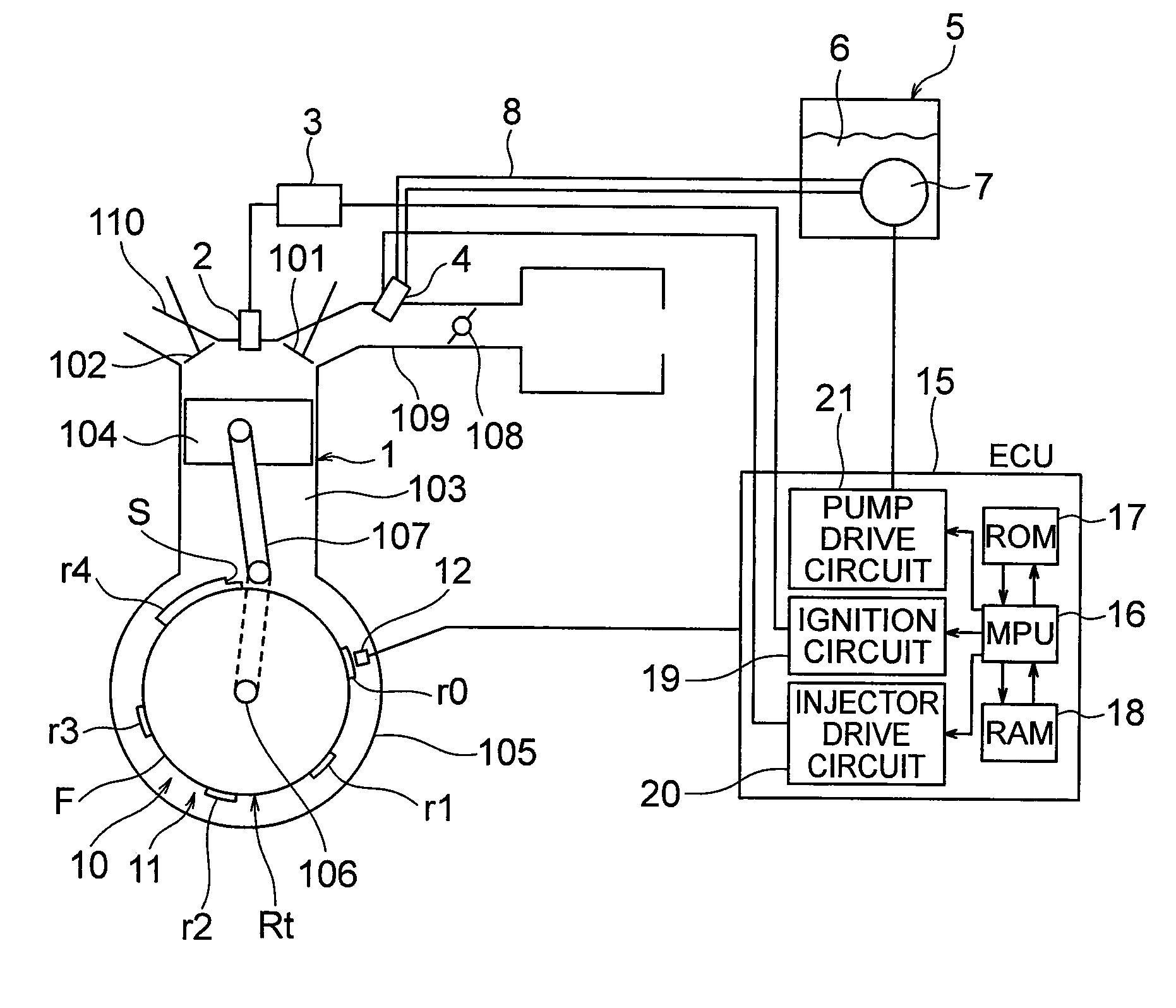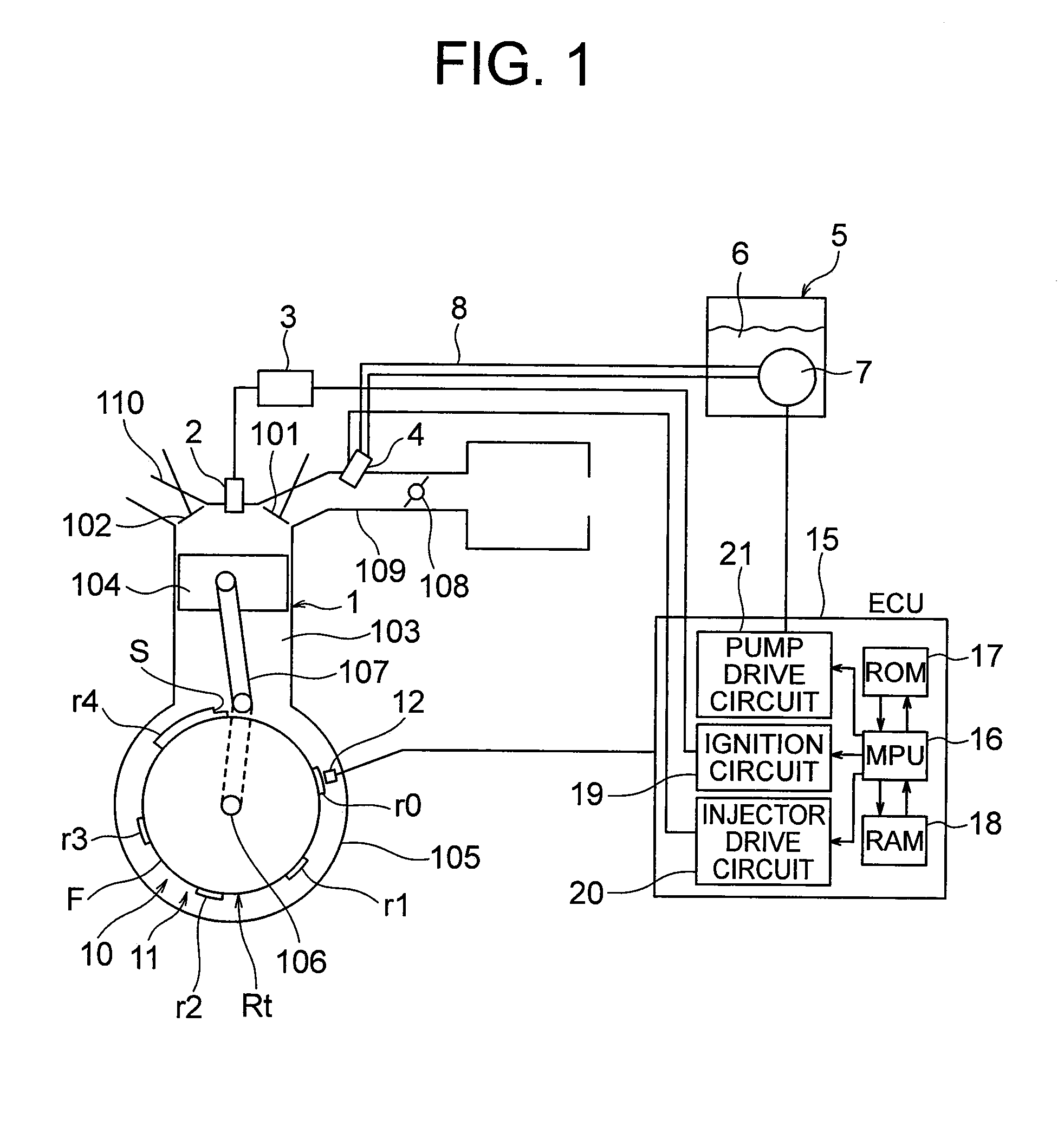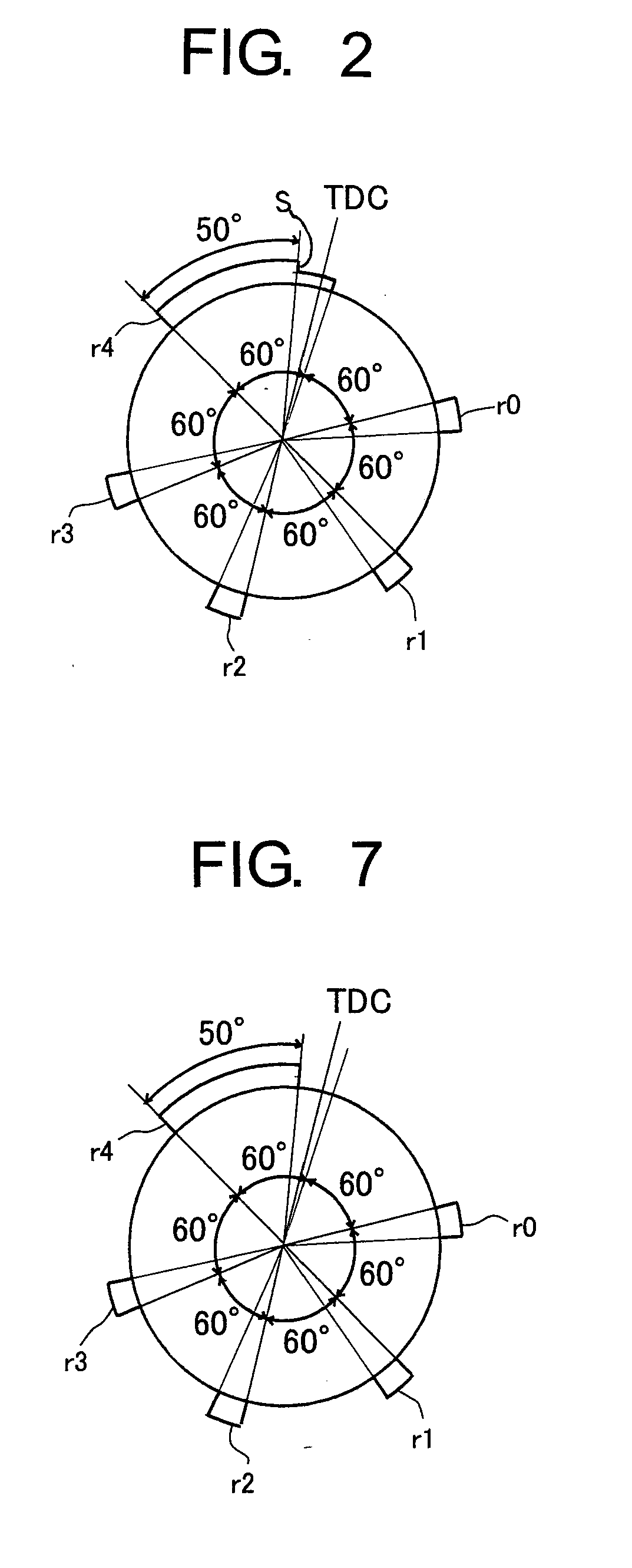Engine ignition control device
a control device and engine technology, applied in the direction of electric control, ignition automatic control, muscle operated starters, etc., can solve the problem of not being easily pushed back, achieve high start-up torque, increase engine startability, and not compromise startability
- Summary
- Abstract
- Description
- Claims
- Application Information
AI Technical Summary
Benefits of technology
Problems solved by technology
Method used
Image
Examples
first embodiment
[0034]FIG. 1 schematically shows the configuration of hardware used in the embodiments of the present invention, and the numeral 1 in this drawing indicates a single-cylinder four-stroke engine. The engine 1 has a cylinder 103 having in a head an intake port and an exhaust port opened and closed by an intake valve 101 and an exhaust valve 102, a piston 104 disposed inside the cylinder 103, a crank case 105 provided in the bottom part of the cylinder 103, a crankshaft 106 disposed inside the crank case 105 and rotatably supported by the crank case 105, and a connecting rod 107 for linking the crankshaft 106 and the piston 104. A spark plug 2 is attached to the head of the cylinder 103, and a high voltage for ignition induced in a secondary coil of an ignition coil 3 is applied to the spark plug 2. An intake tube 109 having a throttle valve 108 attached inside is connected to the intake port of the engine, and an exhaust tube 110 is connected to the exhaust port. An injector (a fuel i...
second embodiment
[0075]In the first embodiment, a protuberance having a level difference at some point was used as the reluctor r4 for generating a reference pulse, but in the present embodiment, a reluctor r4 composed of an arcuate protuberance having no level difference at any point is used as shown in FIG. 7. In this case, the arc angle between the poles of the reluctor r4 is made equal to the angle (50° in the present embodiment) from the first reference crank angle position θ4A to the second reference crank angle position θ4B. FIG. 8 shows the waveform of the crank angle signal outputted by the crank angle sensor 12 when such a reluctor is provided. The crank angle signal shown in FIG. 8 has a waveform that omits the pulse P4C from the waveform shown in FIG. 3.
[0076]In cases in which a crank angle signal such as the one shown in FIG. 8 is used, a first start-of-delaying-angle determination value Ts1 used when kick force is applied to the crankshaft and a second start-of-delaying-angle determina...
third embodiment
[0079]In the above embodiments, the start-of-delaying-angle determination value and end-of-delaying-angle determination value were switched according to the start-up rotation angle detected by the start-up rotation angle detection means 36, but in the third embodiment of the present invention, the regular ignition position and maximum delay angle position at start-up are switched according to the start-up rotation angle detected in the regular ignition position. A block diagram showing the configuration of the ignition control device according to the present embodiment is shown in FIG. 10. The block diagram of FIG. 10 is identical to the block diagram of FIG. 4 except for the switching means 37 being configured so as to switch the regular ignition position and the maximum delay angle position. The reluctor detected by the crank sensor 12 in the present embodiment is the same as the one shown in FIG. 2, and the waveform of the crank angle signal outputted by the crank angle sensor 12...
PUM
 Login to View More
Login to View More Abstract
Description
Claims
Application Information
 Login to View More
Login to View More - R&D
- Intellectual Property
- Life Sciences
- Materials
- Tech Scout
- Unparalleled Data Quality
- Higher Quality Content
- 60% Fewer Hallucinations
Browse by: Latest US Patents, China's latest patents, Technical Efficacy Thesaurus, Application Domain, Technology Topic, Popular Technical Reports.
© 2025 PatSnap. All rights reserved.Legal|Privacy policy|Modern Slavery Act Transparency Statement|Sitemap|About US| Contact US: help@patsnap.com



